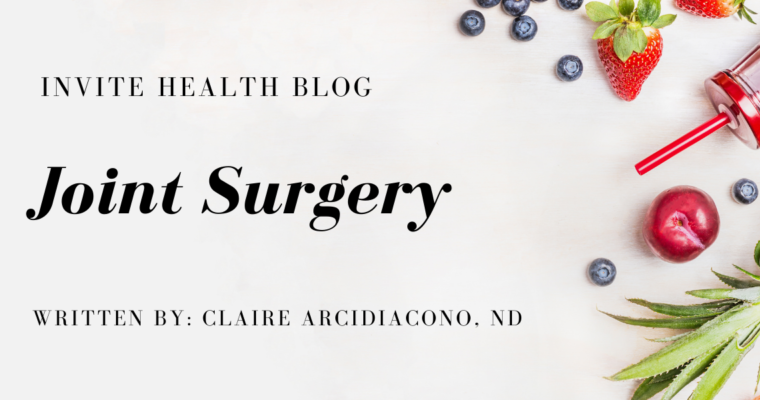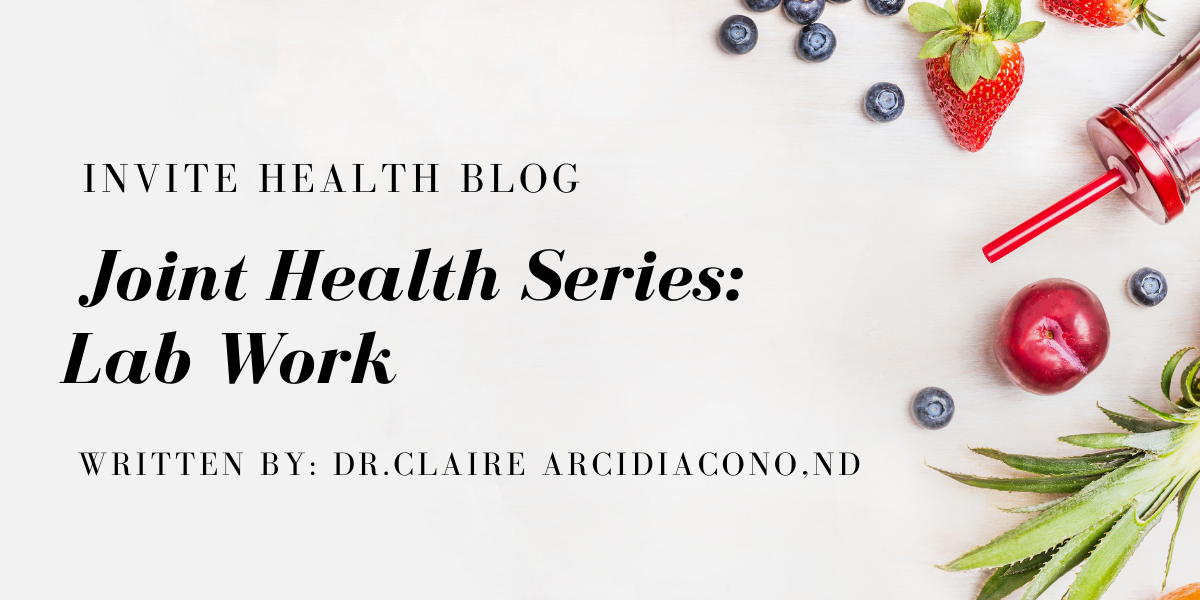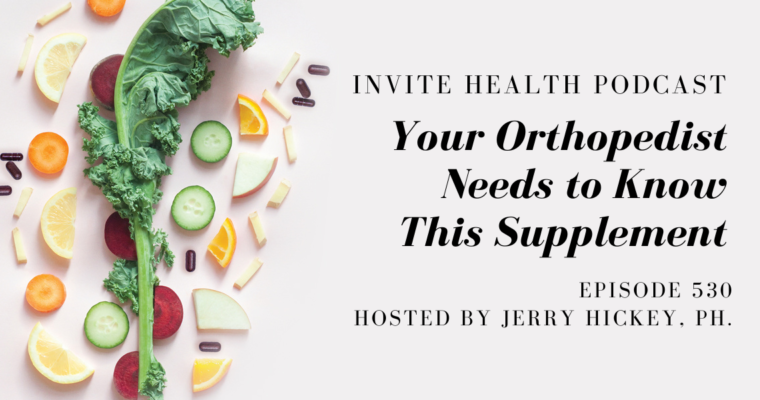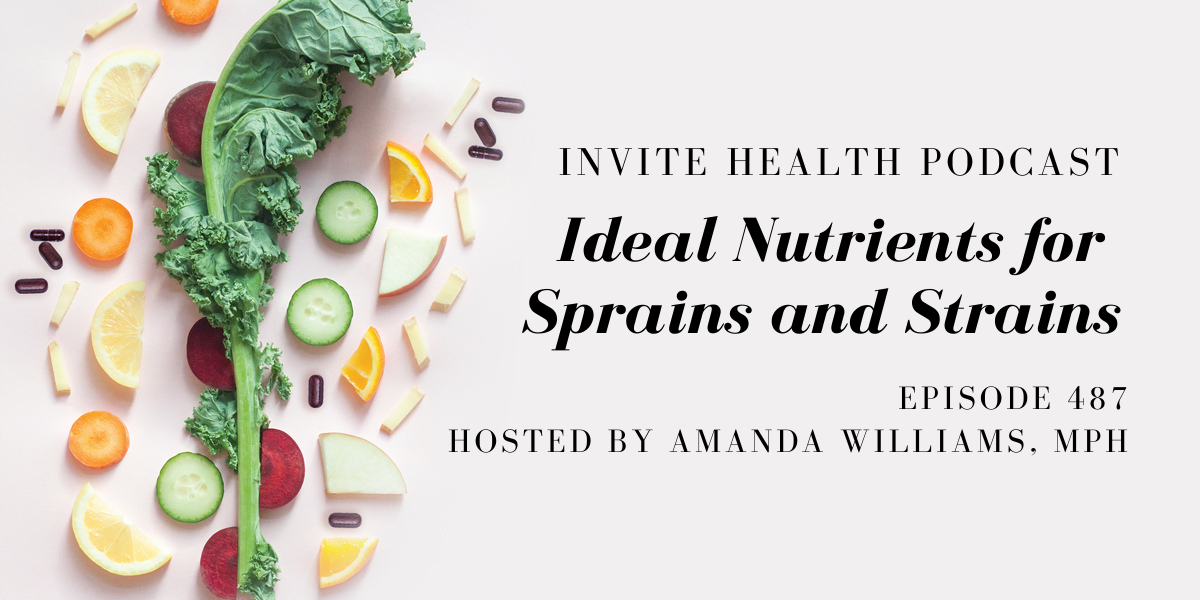sprains sprains sprains sprains sprains sprains sprains sprains sprains
Subscribe Today!
Please see below for a complete transcript of this episode.
Ideal Nutrients for Sprains and Strains – InViteⓇ Health Podcast, Episode 487
Hosted by Amanda Williams, MPH
*Intro music*
Intro: [00:00:04] Welcome to the InViteⓇ Health Podcast, where our degreed healthcare professionals are excited to offer you the most important health and wellness information you need to make informed choices about your health. You can learn more about the products discussed in each of these episodes and all that InViteⓇ Health has to offer at www.invitehealth.com/podcast. First time customers can use promo code PODCAST at checkout for an additional 15% off your first purchase. Let’s get started.†
Amanda Williams, MPH: [00:00:40] When it comes to common soft tissue injuries, we have to really analyze the difference between a strain and a sprain. And these are both incredibly common, and we know that inflammation is a key driver in both of these. But I want to talk a little bit about what you can be doing to target that inflammation in the event that you unfortunately get a sprain or a strain.†
[00:01:05] So I’m Amanda Williams, MD, MPH and when we think about the difference between a strain and a sprain, the sprain itself is an overstretching or a tearing. You can even have like a a very fine tear within a ligament. Now the ligaments are bands of tissue that connect two bones together within a joint. Now, think about the most common area for a sprain to occur is your ankle. So say, for example, you’re playing a sport. We’ve all heard about someone spraining their ankle, but this can also happen if you step a little funny off of a sidewalk. So we know that sprains in the ankle are the most common area to which we can have this problem.†
ACHING JOINTS? YOU NEED THESE NUTRIENTS – INVITE HEALTH PODCAST, EPISODE 455. Listen Now>>
[00:01:54] Now we can look at a strain. A strain occurs when there is an over-stretching or even a small tearing within the muscle or within a tendon. Now, tendons are the fibrous tissue that connect bones to muscles. Now, the most common location for muscle strains are going to be in our back. So many people have, you know, maybe you go to reach for something and then you feel all of a sudden this sharp and intense pain in your back. Now this can then drive up muscle spasms because we know that that’s a very common symptom of a strain.†
[00:02:37] So let’s kind of break down symptomatically what we’re dealing with. If you sprain your ankle, for example, you will likely have a significant amount of swelling within that area. You will have a difficult time when it comes to the movement within that area. You oftentimes have bruising. Now, when we look at some of the common symptoms of a strain, this is when we’re dealing once again with swelling. So we know we have this inflammatory response that occurs. There’s usually a significant amount of pain around that muscle. We also can have muscle spasms, so they’re, they’re very similar in nature. It’s just how exactly they are presenting.†
[00:03:29] Now, seeing that both of these are very common, and when someone is dealing with this, it can be definitely problematic because I’ve strained my back before, and I know that that is not a fun experience. You know, you’re trying to find a comfortable position and you feel like the muscles start to go into a spasm mode, and that is never a pleasant experience. So what are some things that we can be doing? We know that the common thought process when it comes to treatment of a sprain or a strain comes down to resting and icing, you know, limited movement within the area of injury. But we also have to consider the other component, which is targeting the inflammation now standard treatment would be to use an NSAID, a non-steroidal anti-inflammatory drug, to target that pain and to target the inflammation.†

[00:04:38] But what if you’re not exactly a big fan of taking an NSAID and you’re looking for something that comes from nature? And you said there’s got to be another alternative out there and indeed there is. So I oftentimes when someone is experiencing whether it be a sprain or a strain is three different nutrients to really help to support the healing process and to ease the inflammation, as well as to ease the discomfort. So those nutrients are bromelain, which we know is very targeted towards that inflammation, horse chestnut extract and magnesium, because we know the magnesium is going to help to support the relaxation of the muscles in the area around the injury. It also helps to optimize the adequate blood flow because remember, magnesium helps with that vasodilation. So we’re going to get better blood flow to the site of the injury. Then we have bromelain, which we know is targeting inflammation in a very specified way. And then we add in the horse chestnut.†
[00:05:59] Now horse chestnut is really quite interesting because oftentimes we think of this in that setting of the vascular support. So when someone is dealing with something like peripheral artery disease or chronic venous insufficiency. But we also recognize that the horse chestnut does a wonderful job when it comes to easing inflammation. And there are studies out there showing that the active constituent, the, the plant sterols that are contained within the chestnut itself, do a wonderful job in terms of enhancing the body’s ability to down regulate that inflammation. So if someone is dealing with something like hemorrhoids, for example, obviously we want to be looking at the Veins HxⓇ formulation because we know we’re getting that vascular support. At the same time, we’re easing inflammation. So when we think about an injury, such as a sprain, then it would be incredibly advantageous to have those nutrients from the Veins HxⓇ, including that horse chestnut, to really help to enhance the healing process. And then we look at bromelain, and certainly we understand that bromelain has been shown in multiple clinical trials to enhance, once again, our body’s ability to heal.†
NUTRIENTS TO TARGET RESTLESS LEG SYNDROME – INVITE HEALTH PODCAST, EPISODE 317. Listen Now>>
[00:07:27] We see this in the setting of plastic surgery. Many plastic surgeons now are advising their patients to take bromelain both before and after surgery because it can really promote and accelerate that wound healing process. In the Journal of Medical Science and Sports Exercise, they were looking at how bromelain, which is this proteolytic enzyme derived from the pineapple, has these therapeutic effects on inflammation of soft tissue injuries. So they wanted to really set up a series of tests where they could determine how it was that the bromelain itself was working and they could see how that proteolytic enzymatic property of the bromelain was working within those muscle fibers, really allowing for the proper healing of those muscles. Now there have been studies where they have compared bromelain to diclofenac, a very commonly prescribed NSAID. They have compared bromelain to just over-the-counter ibuprofen when it comes to targeting muscle soreness. Remember when I mentioned like a muscle strain such as in your back or your hamstring. They have found that bromelain does a really phenomenal job at easing the discomfort.†
[00:09:00] So this is an area where we know that muscle strains and ankle injuries, such as sprains, are incredibly common, and we want to do everything in our power to make sure that we are enhancing the way that our body can manage that injury. So in this combination of utilizing bromelain, and I always advise taking it on an empty stomach, generally two capsules, which would be 1000mg, and you can take that maybe two to three times per day. So, you know, either before meals or after meals. And then we add in that Veins HxⓇ, especially if we have a sprain or we have that the ligament component to that where we drive up all of that inflammation and the bruising and the swelling, then that Veins HxⓇ can really be incredibly supportive. And then we have that magnesium to allow the muscle and the blood support that we need during an injury.†
[00:10:07] So that is all that I have for you for today. I want to thank you so much for tuning in to the InViteⓇ Health Podcast. Remember, you can find all of our episodes for free wherever you listen to podcasts or by visiting invitehealth.com/podcast. Now, do make sure that you subscribe and you leave us a review. You can follow us on Facebook, Twitter and Instagram @invitehealth and we will see you next time for another episode of the InViteⓇ Health Podcast.†













